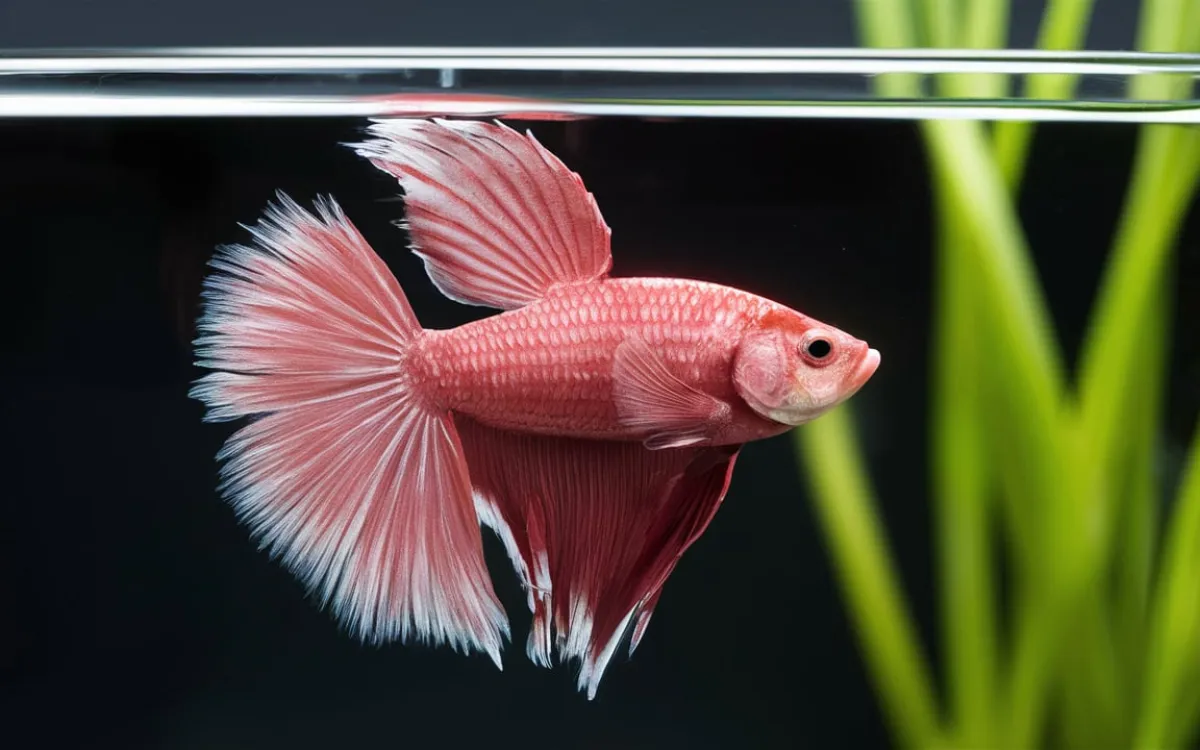You’ve fallen for the beauty of a betta fish, their flowing fins and vibrant colors. But did you know their health depends on the water they live in? This guide will explore the best betta fish water sources, treatment methods, and essential parameters for a thriving betta tank.
From tap water to rainwater, Betta Fish Information will cover everything you need to know to create the perfect watery home for your finned friend.
Why Is Water Important For Betta Fish?
Most people understand that fish can’t survive outside of water, but the reason behind this isn’t always clear. Out of water, a fish is unable to breathe and will slowly suffocate. However, fish can also perish if kept in water that isn’t suitable for their long-term needs.
Bettas, also known as Siamese fighting fish, are relatively easy to care for, but they require a good source of water for a long and healthy life. When it comes to aquarium water, not all sources are created equal.
How To Change Betta Fish Water

Most people know fish need water to survive, but not everyone understands why. Out of water, a fish can’t breathe and will suffocate. However, even in water, fish can die if it’s not suitable for their long-term needs.
Bettas, also known as Siamese fighting fish, are relatively easy to care for, but they require good water quality for a long and healthy life. Here’s how to prepare the perfect water for your betta:
1. Choose Your Water Source
Tap water is the most readily available source for betta fish tanks, but it often contains chlorine and other chemicals that can be harmful to fish. These chemicals are added to tap water to kill bacteria and make it safe for human consumption, but they can be toxic to fish.
Well water, on the other hand, may have a different mineral content than tap water. While it’s typically free of chlorine, it’s essential to test well water for pH and hardness levels to ensure it’s suitable for betta fish.
Rainwater is generally considered safe for betta fish, but it can be acidic. To ensure the water is safe, collect rainwater in a clean container and let it sit for a few days to allow any chlorine to dissipate. This will also give the water a chance to reach room temperature, which is ideal for betta fish.
2. Prepare Your Water
Clean Container: Use a clean bucket or container that has never held harmful substances like chemicals or cleaning agents. Rinse it thoroughly with fresh tap water.
Treatment: Add the required amount of aquarium water treatment to the container. This will neutralize chlorine and other harmful substances.
Temperature: While betta fish can tolerate cooler temperatures, they are more active and healthy at 76° to 85° F. Use a heater for smaller tanks or bowls. For larger tanks, Aqueon heaters are a good option.
3. Adding the Water to the Aquarium
Before adding the treated water to your betta’s aquarium, it’s important to perform a temperature check. While the water doesn’t need to be the exact same temperature as the aquarium, it’s best to avoid drastic temperature changes.
A sudden shift in temperature can shock your betta and make them more susceptible to illness. Aim for a temperature that’s close to the aquarium’s water temperature, or at least around average room temperature (70℉).
Once you’ve confirmed the temperature is suitable, carefully pour the treated water into the aquarium. It’s best to pour the water slowly and steadily, avoiding any sudden splashes or disturbances. This will help prevent shocking your betta and minimize disruption to the aquarium’s ecosystem, especially if you have gravel or plants in the tank. Think of it like gently introducing a new guest to their new home – slow and steady wins the day!
How Often Should You Do A Water Change?
The frequency of water changes for your betta fish is directly impacted by whether or not you have a filter in their tank. If you’re utilizing a filter, you’ll only need to perform a 40% water change every 2 to 3 weeks. This is because a filter acts as a vital component in maintaining water quality, efficiently removing waste products and keeping the water clean. The filter essentially does a lot of the “heavy lifting” when it comes to water maintenance.
However, if you’re keeping your betta without a filter, the frequency of water changes will need to be more frequent. Without a filter to remove waste, the water will become dirty more quickly, requiring more frequent water changes to maintain a healthy environment for your betta.
Think of it like this: a filter is like a mini-cleaning crew for your betta’s home, while a tank without a filter requires more manual cleaning to keep things tidy.
Conclusions
By understanding the importance of proper betta fish water, you’re taking a crucial step towards ensuring your beloved companion thrives. Remember, clean, treated, and properly maintained water is the foundation for a healthy and vibrant betta fish. So, dive in, learn the secrets of betta fish water, and watch your finned friend flourish!

Related Posts
Betta Fish Laying at Bottom of Tank: Causes and Solutions
Unhealthy vs. Healthy Betta Fish: A Way to Spot the Signs
The Ideal Betta Fish Water Temperature for Healthy